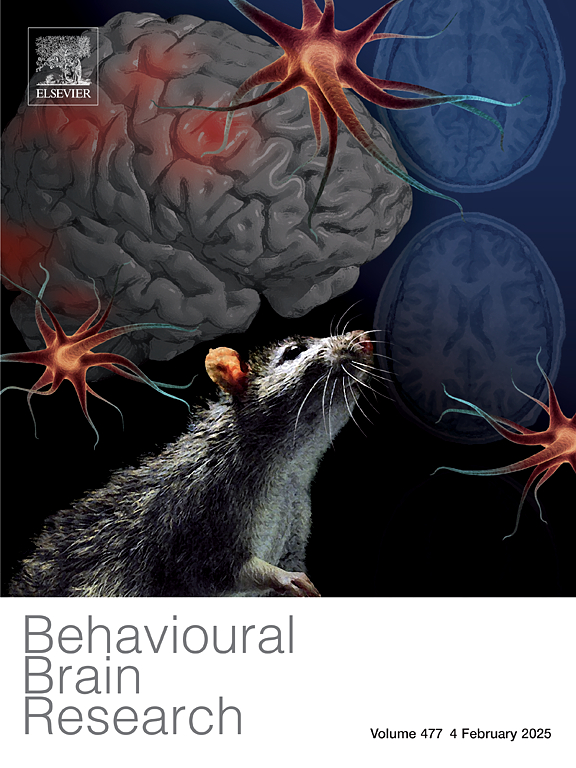Exploring the neurophysiological basis of misinformation: A behavioral and neural complexity analysis
IF 2.6
3区 心理学
Q2 BEHAVIORAL SCIENCES
引用次数: 0
Abstract
The proliferation of misinformation on social media platforms poses significant challenges to public health, political discourse, and social cohesion. This study investigates the efficacy of a World Health Organization (WHO) infodemic intervention in mitigating the spread of misinformation and explores the underlying neural mechanisms involved in information processing. A sample of 77 university students was randomly assigned to an experimental group, which was exposed to the WHO's infodemic intervention, or a control group, which received a campaign on healthy lifestyle habits. Participants viewed a series of manipulated and non-manipulated tweets before and after the intervention, rating their likelihood to share, verify, and perceive the truthfulness of the information. Electroencephalogram (EEG) data were collected throughout the experiment to assess neural complexity using Sample Entropy (SampEn) measures. Results revealed that the experimental group significantly reduced their intention to share information and perceived truthfulness of both manipulated and non-manipulated items post-intervention. The control group showed no significant changes. EEG analysis demonstrated higher SampEn scores in the frontal and temporal regions for the experimental group post-intervention, indicating increased neural complexity and more homogeneous activation patterns. These findings suggest that the WHO intervention effectively enhanced participants' critical evaluation of information, reflected in both behavioral and neurophysiological changes. This study contributes to the growing body of research on misinformation interventions by providing evidence for the effectiveness of passive, less demanding campaigns in fostering critical thinking and information discernment. Moreover, it offers novel insights into the neural correlates of information processing following such interventions, highlighting the potential of combining behavioral and neurophysiological measures in misinformation research. These findings have important implications for developing targeted strategies to combat misinformation, enhance digital literacy, and inform future public health and policy initiatives in the digital era.
探索错误信息的神经生理学基础:行为和神经复杂性分析
社交媒体平台上错误信息的扩散对公共卫生、政治话语和社会凝聚力构成了重大挑战。本研究探讨了世界卫生组织(WHO)信息干预在缓解错误信息传播方面的效果,并探讨了信息处理的潜在神经机制。77名大学生被随机分为实验组和对照组,实验组接受了世界卫生组织的信息干预,对照组接受了健康生活习惯的宣传。参与者在干预之前和之后观看了一系列被操纵和未被操纵的推文,评估他们分享、验证和感知信息真实性的可能性。在整个实验过程中收集脑电图(EEG)数据,使用样本熵(SampEn)测量来评估神经复杂性。结果显示,实验组在干预后显著降低了他们分享信息的意愿和感知操纵和非操纵项目的真实性。对照组无明显变化。脑电图分析显示,干预后实验组的额叶和颞叶SampEn得分更高,表明神经复杂性增加,激活模式更均匀。这些发现表明,世卫组织的干预有效地增强了参与者对信息的批判性评价,这反映在行为和神经生理的变化上。本研究通过为被动的、要求较低的活动在培养批判性思维和信息辨别方面的有效性提供证据,为越来越多的关于错误信息干预的研究做出了贡献。此外,它提供了新的见解,在这些干预后的信息处理的神经相关性,突出结合行为和神经生理测量在错误信息研究的潜力。这些发现对于制定有针对性的战略以打击错误信息、提高数字素养以及为数字时代未来的公共卫生和政策举措提供信息具有重要意义。
本文章由计算机程序翻译,如有差异,请以英文原文为准。
求助全文
约1分钟内获得全文
求助全文
来源期刊

Behavioural Brain Research
医学-行为科学
CiteScore
5.60
自引率
0.00%
发文量
383
审稿时长
61 days
期刊介绍:
Behavioural Brain Research is an international, interdisciplinary journal dedicated to the publication of articles in the field of behavioural neuroscience, broadly defined. Contributions from the entire range of disciplines that comprise the neurosciences, behavioural sciences or cognitive sciences are appropriate, as long as the goal is to delineate the neural mechanisms underlying behaviour. Thus, studies may range from neurophysiological, neuroanatomical, neurochemical or neuropharmacological analysis of brain-behaviour relations, including the use of molecular genetic or behavioural genetic approaches, to studies that involve the use of brain imaging techniques, to neuroethological studies. Reports of original research, of major methodological advances, or of novel conceptual approaches are all encouraged. The journal will also consider critical reviews on selected topics.
 求助内容:
求助内容: 应助结果提醒方式:
应助结果提醒方式:


